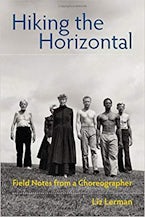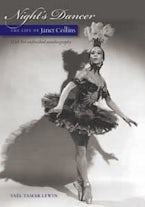- Home
- Wesleyan Dance
- performing arts
- history
- Celluloid Classicism

Celluloid Classicism
Early Tamil Cinema and the Making of Modern Bharatanatyam
Series: Wesleyan Dance
Sales Date: 2019-10-01
A detailed history of the confluence of two South Indian art forms
Winner of De La Torre Bueno First Book Special Citation, given by DSA, 2021
Celluloid Classicism provides a rich and detailed history of two important modern South Indian cultural forms: Tamil Cinema and Bharatanatyam dance. It addresses representations of dance in the cinema from an interdisciplinary, critical-historical perspective. The intertwined and symbiotic histories of these forms have never received serious scholarly attention. For the most part, historians of South Indian cinema have noted the presence of song and dance sequences in films, but have not historicized them with reference to the simultaneous revival of dance culture among the middle-class in this region. In a parallel manner, historians of dance have excluded deliberations on the influence of cinema in the making of the "classical" forms of modern India. Although the book primarily focuses on the period between the late 1920s and 1950s, it also addresses the persistence of these mid-twentieth century cultural developments into the present. The book rethinks the history of Bharatanatyam in the twentieth century from an interdisciplinary, transmedia standpoint and features 130 archival images.
INTRODUCTION • On Convergent Histories • The Devadāsī Community and the Cinematic Imagination: Politics, Participation, and Representation • The Ocular Politics of Making Modern Bharatanatyam • Cinema, Dance, and Bourgeois Nationalism: Mediated Morality, "Classicism," and the State in Modern South India • The Emergence of the "Choreographer" and a New Envisioning of Dance • Genre, Repertoire, and Technique between Cinema and the Urban Stage Coda • The Enduring Pedagogical Afterlives of Bharatanatyam's "Celluloid Classicism"
HARI KRISHNAN is associate professor of dance at Wesleyan University. His research interests span a range of topics, including queer subjectivities in South Asian and global dance performance, colonialism, post-colonialism and Indian dance, and the history of devadasi (courtesan) dance traditions in South India. He is also the artistic director of Toronto-based dance company inDANCE, and as an award winning dance-maker, is commissioned internationally for his bold and transgressive choreography.
"A striking achievement, Celluloid Classicism deepens and broadens conventional histories of South Indian performance. Meticulously researched and conceptually rich, Krishnan's work illustrates the aesthetic debt modern bharata natyam owes to South Indian cinema while also demonstrating cinema's reliance on local dance and theatre traditions."
~Janet O'Shea, author of At Home in the World: Bharata Natyam on the Global Stage
"This beautifully crafted, path-breaking book situates south Indian 'classical' dance in the genealogies of modernity. Krishnan's argument—that Bharatanayam emerged in symbiosis with a cinema permeated by dance and its hereditary practitioners—is simply compelling."
~Indira Peterson, Mount Holyoke College










